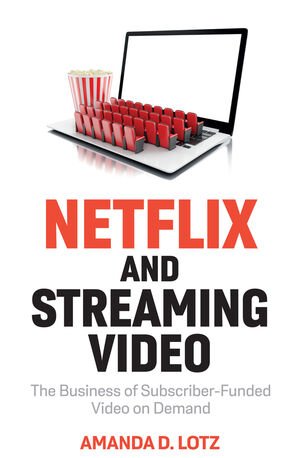Book Excerpt: Netflix Just Won't Be Netflix With Ads
The following TVREV exclusive is an excerpt from Professor Amanda Lotz’s new book Netflix and Streaming Video: The Business of Subscriber-Funded Video on Demand, which has a June 2022 release date.
The question of when Netflix will take up ads has been perennial over the last decade. Not even a question of if for many, but simply when. The persistence of this question belies the limitations of our understanding of the scale of disruption internet-distributed video has delivered. SVOD is not only defined by a new distribution technology; it also enables business model transformation, an adjustment with extensive implications.
Video delivery may be core to both AVOD and SVOD, but the revenue sources aren’t interchangeable. Playing to win in AVOD would mean an end to Netflix as we know it – much of the last decade of development, the creative relationships and reputations built would be for naught.
SVOD success is measured in different metrics that are best served with different library strategies than those suited for AVOD. Pure subscriber funding expands the types of shows that are most valuable and alters the metrics by which they should be measured. Changing to advertiser support – seeking to attract the most attention to be sold to advertisers rather than satisfying subscribers – would have a profound and business-redefining effect on Netflix’s programming and our experience of it.
The innovation of Netflix that derives from its subscriber funding and its lack of pre-existing owned-IP has allowed it to expand the boundaries of commercially viable storytelling. Many of the titles Netflix commissions could not have existed in a pre-streaming world. It can support a greater range of stories because of the subscriber funding – with a strong assist from the ability to deliver titles on demand. Sure, there might be opportunity for some ad integration or placement at Netflix. But for Netflix to be Netflix, wooing advertiser dollars can’t be the primary revenue consideration.
Ad-funding is also a fine business model, but it is a different business model than subscriber funding – arguably AVOD and SVOD are in entirely different sectors: one competes for ad dollars, the other for consumer spending. The difference is what allowed HBO its decades of distinction. Streamers with libraries based on owned-IP such as Paramount+, Disney+, and HBO Max can include an ad-supported tier or pivot to AVOD because the IP their libraries are based on was built for another era in which limited choice and control made mass audiences possible. That IP was made to collect attention to service advertisers, not to connect with viewers the way subscriber-funded services require.
There is no talk about Disney+’s library strategy in the way bits and pieces of evidence of taste clusters and taste communities have emerged from investigating Netflix’s strategy. That is because Netflix is based on maximizing the opportunities of being a subscriber-funded video service while those flirting with advertising see streaming as a corporate extension of the distribution model that has long underscored their business – build mass audiences.
Viewers don’t derive the same value from the mass hit. Sure they check out the title everyone is talking about, but it doesn’t provide the depth of satisfaction and resonance that compels subscription. Subscription requires distinctive content and experience. Loving titles leads people to pay, but titles people love are rarely mass hits.
Armchair analysists can obsess over Netflix top 10 data, but it is a small part of the big picture. Quite intentionally, I suspect, those of us on the outside don’t see the big picture that illustrates the value that comes from the range of experiences the service offers – on-demand content suitable for a variety of adult tastes, occupying children, and also a family movie night. We also don’t see the value of titles that land well outside of the top 10 but rank among favorite shows
The longer Netflix hides the sophistication of its SVOD strategy while speculation about an ad strategy persists, the more deeply it cements the distinction of its value proposition relative to the owned-IP services. Those who can only think ‘most viewing = most valuable’ develop titles that may drive spikes in viewing and buzz, but these must be combined with taste cluster favorites to achieve long-term subscriber value and retention in the crowded field. And none of this even begins to address Netflix’s head start in understanding how to craft an SVOD business for a global market. A global AVOD business substantially reduces the economies of scope relative to SVOD – even with programmatic buying; and imagined ad-based video empires are being built on foundations of sand, just as in print earlier in the century.
Of course the owned-IP based services can pivot their strategy and develop an approach to their future libraries that is well aligned to the opportunities of subscriber funding and derive value from viewer satisfaction not just peak attention. Expecting ‘streaming wars’ overlooks the ample complementarity among AVOD and SVOD, domestic and global, specialized and general. There are many opportunities for winners because there are many different races being run.


